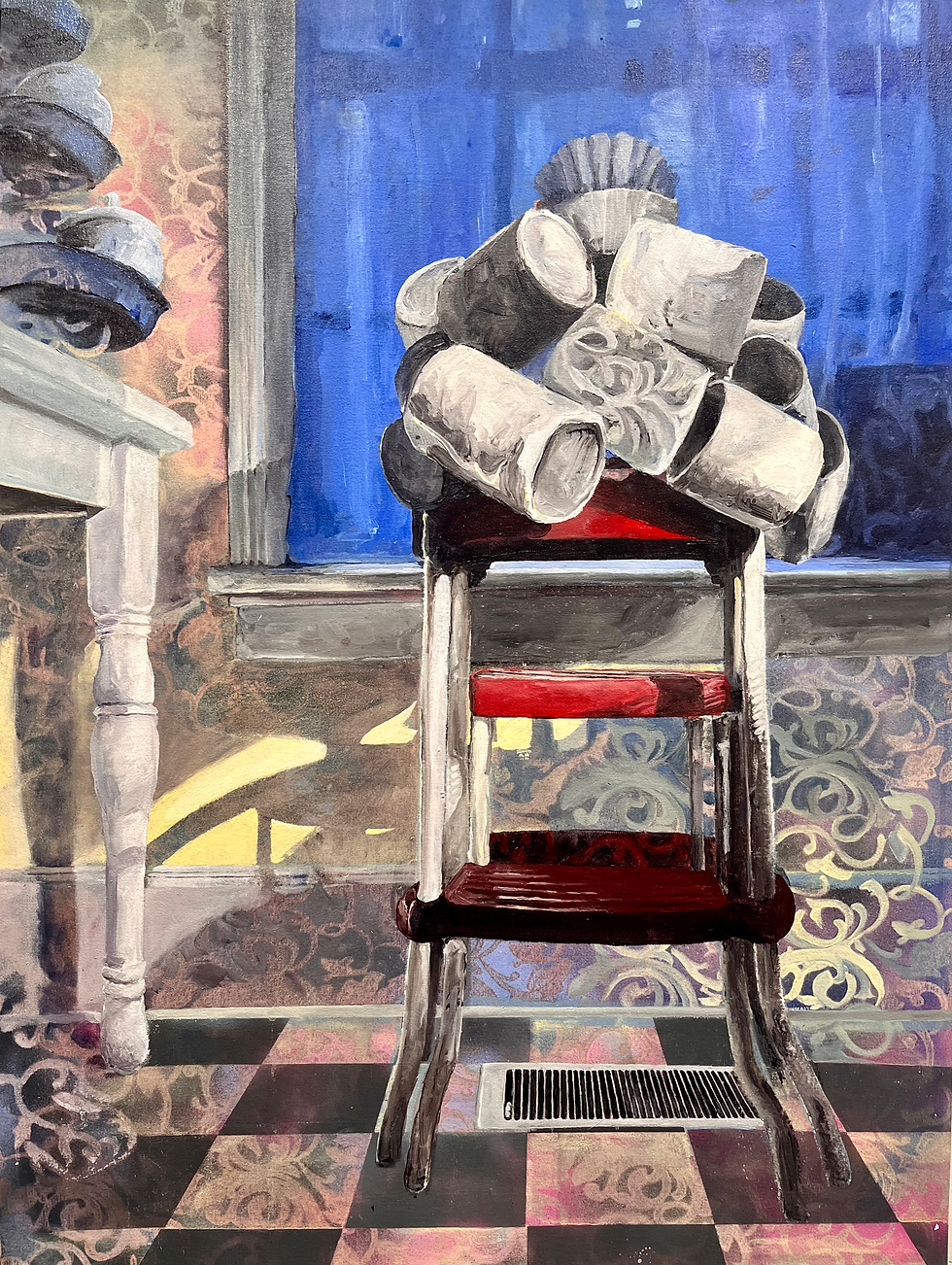Bearing Witness, the Work of Seeing.
- ericodellcom
- Jun 27, 2020
- 3 min read
The greatest thing a human soul ever does in this world is to see something and tell what it saw in a plain way. Hundreds of people can talk for one who can think, but thousands can think for one who can see. To see clearly is poetry, prophecy and religion, all in one. -John Ruskin

Wider Sense, 4 x 6 feet, 2007 , acrylic on canvas
As a professor, I am peering towards the next semester. Fall, for everyone, is approaching as an ominous mystery. Covid-19 stains the grain of our lives deeper each day. The tragic death of Mr. Floyd and others have exposed, yet again, a stain that is already as deep as our collective bones and they are rightly rattled. On this rocky shore, watching the gathering storm clouds and feeling the earth turn us towards a new semester, I have wondered if what I do and what I teach has relevance. A young lady organized a powerful march where I live in Macon, Georgia, and gave moving witness as to why. Healthcare workers have donned garbage bags and worked untold hours to care for us and loved ones (and complete strangers). From grocery stores to 18 wheelers rumbling through this promised land, ‘Essential Workers’ have shown up and delivered. Me? I’m an art professor, on summer break, going to the studio every day and cutting grass on weekends. Does it even matter?
'Essential' makes me think of fundamental, and my thoughts turn to my Fundamentals of Drawing class.
The hardest thing about drawing is seeing.
Duh.
Why?
To really see, one has to overcome the prejudice of what you think you see. Our pre-formed notions, from toilet paper to human portraits, get in the way. To be aware of what you see is first to be aware of what you think you see, then overcoming that obstacle. It is a low grade case of prejudice that permeates the beginner’s efforts. I tease my beginners that their drawings are open-book tests. They are. Seeing is work, it can be exhausting. Taking on an object, its width, height, position, light source, texture… then add other stuff, relating the heights in a group, how a shadow will fall consistent to a light source, contour… What is the darkest value, the shape of space between objects, how is one thing related to another (taller, closer, brighter, etc.)? There’s more- perspective, eye level, implied lines… and you can see every bit of it, IF you can see it.
One must be patient and humble when rendering from life. Here’s some hard won practical wisdom-
Your first few marks will simply be wrong.
Don’t over-do those early marks. Accept that and proceed.
This fundamental gives me hope that what can be done in an art class is essential. The ‘A-ha!’ of a student realizing they misplaced the center of a roll of toilet paper is every bit as enthusiastic as a student who finds a hypotenuse. It was misplaced because it was mis-seen. Not taking the time or courage to see something can lead to small mistakes of shape and proportion, it fouls up the internal relations of an object and skews the relationship of those things in a composition. If our mind is already made up, it can be impossible see what is in front of us.
Maybe this is a long winded apology. My craft, my discipline, requires patience and to bear honest and thorough witness. Everyone is arriving at the shore, we are dragging our beach carts of ideas with us like we always have. This year the clouds gather and darken towards the horizon. Our collective foreground is filled with videos, pictures, graphs, posts, and monuments as we scroll through a 5 to 6 inch virtual reality window. It is essential to bear witness, to have eyes that see and ears that hear.
I’ll do my best to model patience, and everyone should realize that our first reactions may miss the mark.




Comments